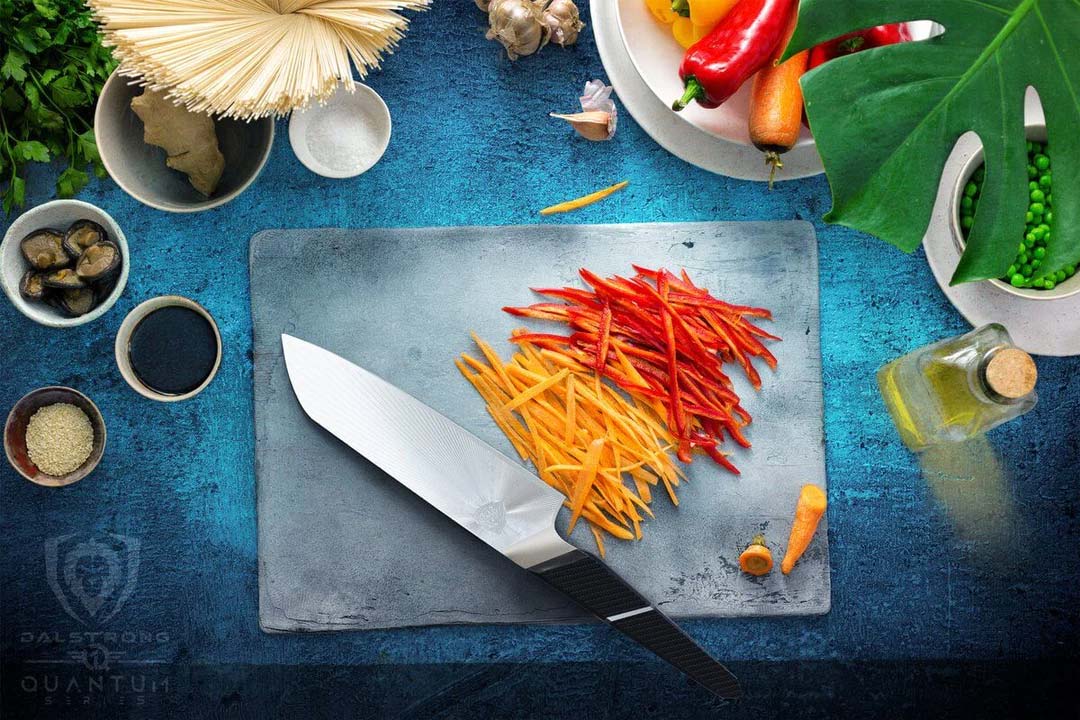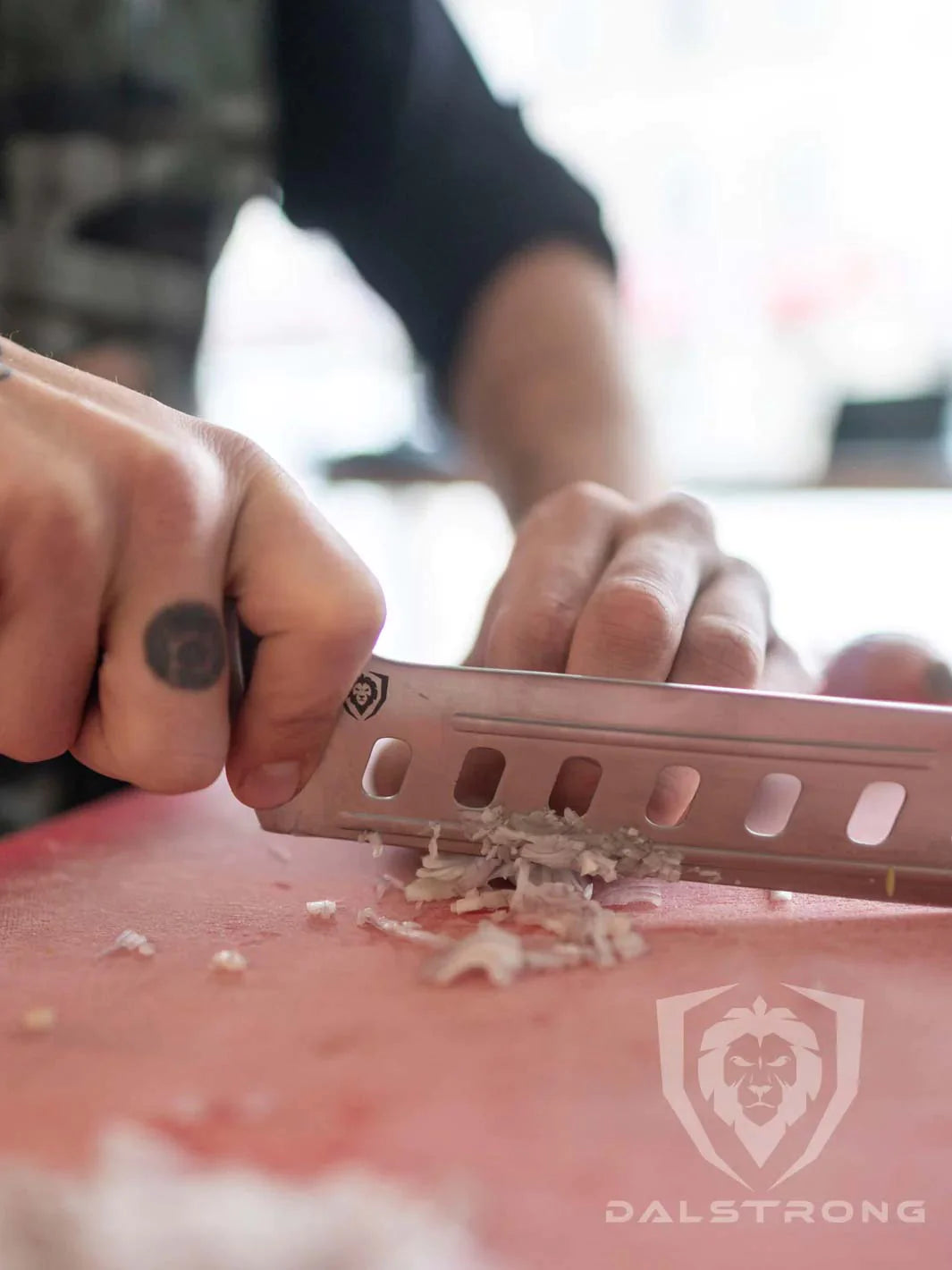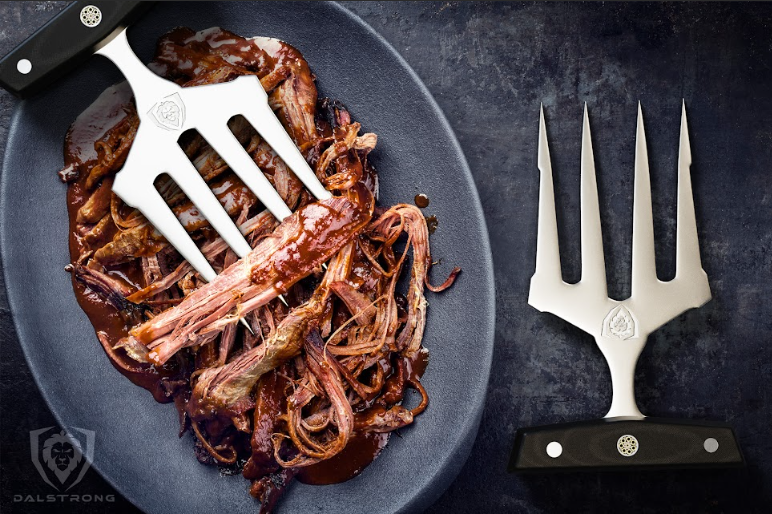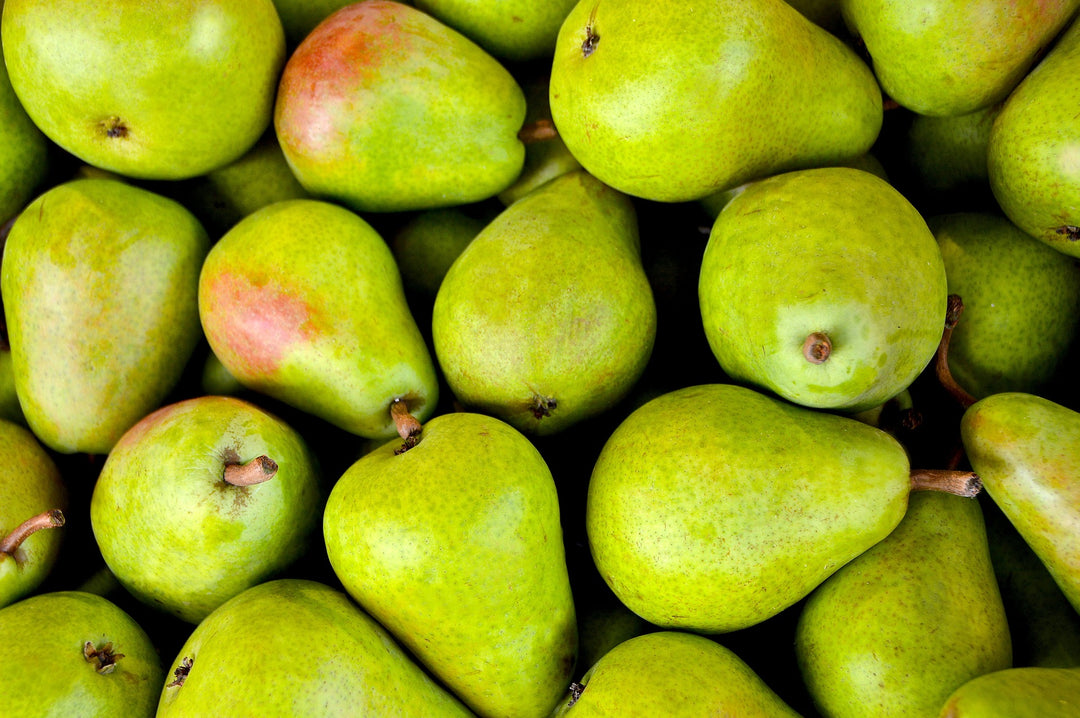Mastering the Perfect Steak: A Comprehensive Guide
 4-Piece Steak Knife Set Shadow Black Series NSF Certified Dalstrong
4-Piece Steak Knife Set Shadow Black Series NSF Certified Dalstrong
The question of how you like your steak cooked has almost overtaken the question of how you like your coffee in terms of personal preferences strangers have strangely intense opinions about. How do you know which degrees of doneness you like your steak? And what are the differences between them? We’ll cover this, and more, below.
1. How Do You Like Your Steak?
 4-Piece Steak Knife Set Frost Fire Series NSF Certified Dalstrong
4-Piece Steak Knife Set Frost Fire Series NSF Certified Dalstrong
Isn’t it kind of weird how the simple question of how well-cooked you like your steak has become a contentious issue?
As expected for a meal that’s so massively popular, people have different ideas of what constitutes a good steak. There are preferences for the type of cut. Preferences for the method of making it. Some like to season their steaks with all kinds of spices, while others keep it simple with some salt and black pepper. But these days, no question is more controversial than that of steak doneness.
It’s true – go to a steakhouse with your friends and keep an eye on everyone’s faces as everyone else makes their orders. Often their faces will contort in judgment, or you’ll find they nod in silent approval. It’s almost a measure of some kind of foodie credibility, where the wrong answer can cause you to be branded in some people’s eyes as an unsophisticated dilettante.
Perhaps we’re being a bit dramatic, but preferences around the varying degrees of steak doneness have certainly become somewhat loaded. Let’s talk about the different degrees of steak doneness, what they are generally understood to mean, and how you can make sure you’re getting the best steak for you.
Read about the best way to store meat for long-term freshness, here.
2. Steak Temperature Chart & Doneness Guide
 4-Piece Straight-Edge Steak Knife Set Red ABS Handles Gladiator Series NSF Certified Dalstrong
4-Piece Straight-Edge Steak Knife Set Red ABS Handles Gladiator Series NSF Certified Dalstrong
Below you’ll find a steak temperature chart detailing the different levels of doneness, but keep in mind that these are rough approximations. For one, there’s no official scientific stance on what constitutes each level, so we’re providing more of a commonly agreed-upon range. Some folks may disagree with these assessments but hey, when hasn’t that been the case on the internet?
|
Level of doneness |
Internal temperature |
Appearance |
|
Blue rare |
115-119°F |
Seared on the outside, fully red throughout |
|
Rare |
120-130°F |
Seared on the outside, 75% red throughout the center |
|
Medium rare |
131-140°F |
Seared outside, 50% pink throughout |
|
Medium |
141-150°F |
Seared outside, 50% pink inside |
|
Medium well |
151-160°F |
Mostly brown with a slight bit of pink |
|
Well done |
161°F + |
Completely brown, or even gray, throughout |
Again, these are approximations and there might be some disagreement on the cooking temperatures. But let’s break it down a bit further.
Blue Rare
This is the least cooked level of steak. The steak is seared quickly on high heat and then served almost raw in the center. The exterior of the steak is browned and the interior is cool and red. It’s not for everyone, as the meat is basically raw and slippery, but many people swear by it.
Rare
Rare steak goes one step further and actually cooks the steak more. The exterior of the steak is browned but the interior is still quite red. The texture of the meat is soft and tender, but it is not as slippery as blue rare steak. The taste is slightly more pronounced than blue rare, but still mild.
Medium Rare
This is a popular level of doneness for steak, and my personal favorite. Though cooked for longer than blue rare and rare steaks, medium rare is considerably juicier as the fat in the meat has had enough time to properly render. The texture of the meat is tender and firmer than rare or blue rare steak. The taste is slightly more developed and the natural flavor of the beef is more prominent. Not to sound biased, but this is the ideal doneness for me.
Medium
People who prefer a more developed flavor and a firmer, juicy texture may prefer medium steak. This level of doneness is still quite juicy, but the meat is cooked through.
Medium Well
At this level of doneness, the steak is cooked through and the center is mostly brown with a small amount of pink. The exterior is browned and the texture of the meat is firm. A steak cooked medium well will be drier and slightly more chewy than previous levels.
Well Done
This is the most cooked level of steak. The steak is cooked through and the center is brown or even gray, with no pink in sight. The meat is firm and considerably drier. Some chefs will outright refuse to cook a steak “well done!” There’s no accounting for taste.
3. How to Check Steak Temperature
 4-Piece Serrated Steak Knife Set Gladiator Series NSF Certified Dalstrong
4-Piece Serrated Steak Knife Set Gladiator Series NSF Certified Dalstrong
If you’re anything like me, you waited way too long to start caring about how to properly check for your steak temperature. You thought “oh man, degrees? That sounds way too complicated. I’ll just get it out of the pan when it looks like it’s about done.” And the result has been a lot of dry, overcooked steaks.
But actually, checking the temperature of your steak as it cooks is not only extremely easy to do, but an important step in making sure your steak comes out right. Why rely on guesswork when we have ways to figure this out? Why risk ruining a perfectly good piece of meat?
There are a couple different methods to check your steak temperature. Some of them are more reliable than others. So let’s start by breaking down some myths.
The touch test
If you’ve watched Gordon Ramsay cooking videos, you’ve probably seen the man himself demonstrate this. The idea is that by touching the steak and comparing the texture and firmness to different parts of your hand, you can determine where it is in its doneness journey. Supposedly, by pressing down on the fleshy part of your thumb with your index, middle, and ring fingers, you approach the firmness of the various degrees of doneness.
I’ll spare you the bother. This method is basically bogus. I say “basically” because I have no doubt that it does work for some people, but it’s not a reliable indication of how cooked your steak is for the simple reason that everybody’s hands are different. Everybody has a different frame of reference, and (crucially) different cuts of meat will have different firmness levels, and so the touch test will fail to provide consistent results.
The appearance test
The idea here is that you can simply eyeball it. By checking the color of the steak, you should be able to determine its current level of doneness. And yes, it’s true that this can be a great method for many people, but it comes down to your level of experience. Of course if you cook many steaks across a long enough period of time, you’ll be able to develop an eye for the signs of when a steak is just right. But it’s not something you’ll be able to do right off the bat.
And finally, the absolute best method for checking your steak temperature…
The meat thermometer
This tool is a life-saver. It’s the easiest, quickest, and most accurate way to check the temperature of your steak. Simply get yourself a meat thermometer, insert it into the thickest part of the steak (make sure not to touch the bone or your cooking surface), and see what it tells you. You can use the temperature guide above to decide when your steak is done. It’s really that simple.
4. Pro Tips for Making the Perfect Steak
 Chef's Knife 6" Shadow Black Series NSF Certified Dalstrong
Chef's Knife 6" Shadow Black Series NSF Certified Dalstrong
Hopefully by this point you have a pretty good idea of what your preferred steak doneness is. Now you may be about to embark on the exciting journey of attempting to cook steak at home. Now unless you have your own sous vide machine, you might find this process a little tricky. There will likely be some trial and error involved. But don’t worry, we have some useful tips for you.
Use high-quality meat
When picking a good quality cut of steak, starting with a good cut of steak, such as ribeye, sirloin, prime ribs, or filet mignon, is going to make things a lot easier for you. Look for steaks with marbling (intramuscular fat), as this fat will render and your steak will stay juicy as it cooks.
Pat your steak dry
Use a paper towel on your steak before cooking. A dry surface will help it develop a nice sear.
Season the steak
Whether you choose to keep it simple with a bit of salt and pepper, or you choose to experiment with additional seasonings such as garlic powder, just make sure to do it on both sides (and the edges, if it’s a thick one).
Remove the steak from the heat a few degrees short of your desired doneness
Use a meat thermometer to check the temperature of the steak, and remove it from the heat when it’s just shy of your ideal temperature. It will come up to temperature as it rests..
Let the steak rest
Don’t slice into it right away! Let the juices redistribute throughout the steak for a good 5 minutes or so.
Slice the steak against the grain
To make the steak more tender, slice it against the grain. Check which way the muscle fibers are running, and slice perpendicular to that direction.
5. Best Tools for the Perfect Steak
Making the best steak at home requires some tools. Aside from the instant read thermometer we mentioned above, you’ll also need some cooking implements to make sure your steak turns out as succulent as you’d hoped for. Here are some Dalstrong tools that will aid you in your quest for the perfect steak.
1. 12" Sauté Frying Pan Hammered Finish Black Avalon Series Dalstrong
Bring your steak to that ideal temperature with this awesome frying pan from Dalstrong’s Avalon series.
PROS:
- Has awesome conductivity, heating 5x better than iron and 20x better than stainless steel.
- It’s made of a 5-ply copper forged foundation, with layers of aluminum and 18/10 stainless steel providing excellent heat retention.
- Looks absolutely gorgeous in any kitchen.
- Due to its strong 2.5mm thickness, this is a true heavy gauge skillet that won’t dent or warp under prolonged heat.
CONS:
- At 12”, this is a pretty large pan; you might be interested in something smaller such as this 10” frypan.
- This does not have a nonstick coating.
2. Lionswood Teak Cutting Board Dalstrong
If you’re going to be cutting your own steaks from larger pieces of meat (which is also a great idea as it gives you more control over your steak thickness and dimensions), you need a reliable cutting board.
PROS:
- Perfect size, an ideal day-to-day kitchen ally.
- Made of 100% sustainably sourced Tropical Teak wood, which only looks better and better with time.
- Really beautiful cutting board, a “statement piece” for your kitchen.
- Features two steel handles, making it easy to transport and extra handy when cooking.
CONS:
- If you are in need of a bigger cutting board, check out the Lionswood Colossal.
- And if you prefer a cutting board made of wood fibre, check out this great Infinity Series Wood-Fibre Cutting Board.
3. 4-Piece Straight-Edge Steak Knife Set Gladiator Series NSF Certified Dalstrong
It’s one thing to make the perfect steak, but what good is that if the tools you’re using to cut into it are not up to snuff? This awesome 4-piece straight-edge steak knife set is a great choice for steak aficionados.
PROS:
- Features four gorgeous knives from Dalstrong’s Gladiator Series.
- Extremely high quality steak knives, made of single-piece high carbon German steel.
- The steak knives have a wonderful balance between knife sharpness and resilience.
- Military grade G10 handle that is both attractive and comfortable.
CONS:
- If you prefer serrated steak knives, check out this awesome set.
- This is only a 4-knife set; if you’d like something bigger check out the option below.
The ultimate steak knife set. This gorgeous 8-piece set comes with its own modular block, making it not only a great tool but also a beautiful piece of decoration for your kitchen.
PROS:
- These gorgeous blades come with red premium quality ABS polymer handles.
- Top-of-the-line blade construction at 56+ Rockwell.
- The blade is beautifully hand polished.
- The gorgeous modular block can be opened and closed for easy storage.
CONS:
- Not everyone is a fan of the red handles, but this will depend on your own preference.
- 8 is a lot of steak knives; if you’re not having that many people over, maybe stick with the 4-knife sets.
6. Frequently Asked Questions
What temperature should a steak be cooked to?
A steak should be cooked to whatever temperature is your preference. For many folks, that range falls within 130-140°F internal temperature, the level of doneness known as “medium rare.” Other people prefer their steak more cooked and will go upwards of 160°F. There is no right or wrong answer because it all depends on your preferences.
Is steak 120 degrees OK?
Cooking a steak to 120°F degrees will put it in the “rare” level of doneness, which is what some folks prefer. So if you like your steaks cooked to rare, this is perfect. This level of doneness is best suited for leaner cuts such as filet mignon; at that temperature, the fat of some other cuts hasn’t had time to properly render. In summary, you’ll be safe eating a rare steak, but whether you enjoy it or not is an entirely different question.





















































































































































































































































